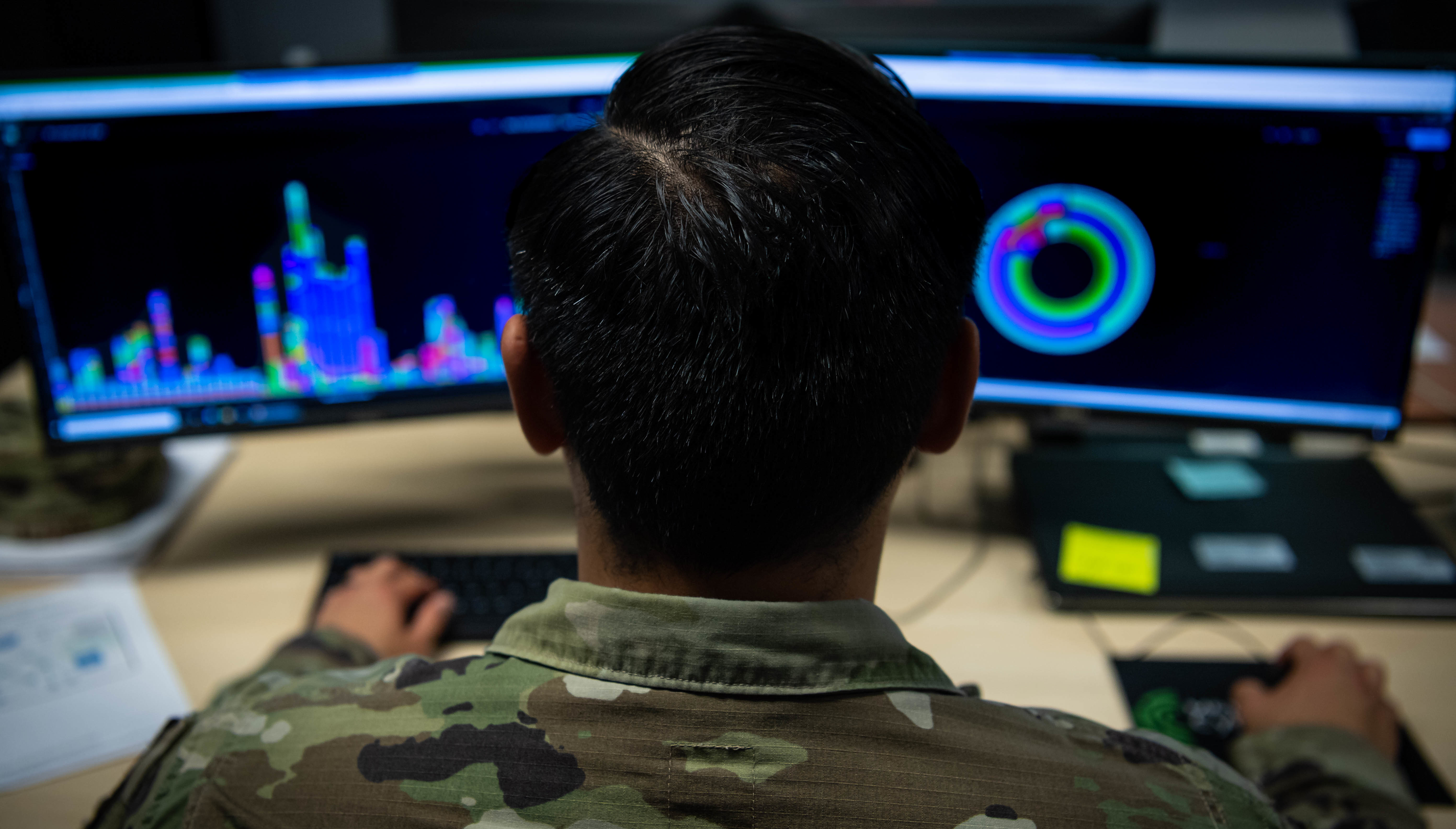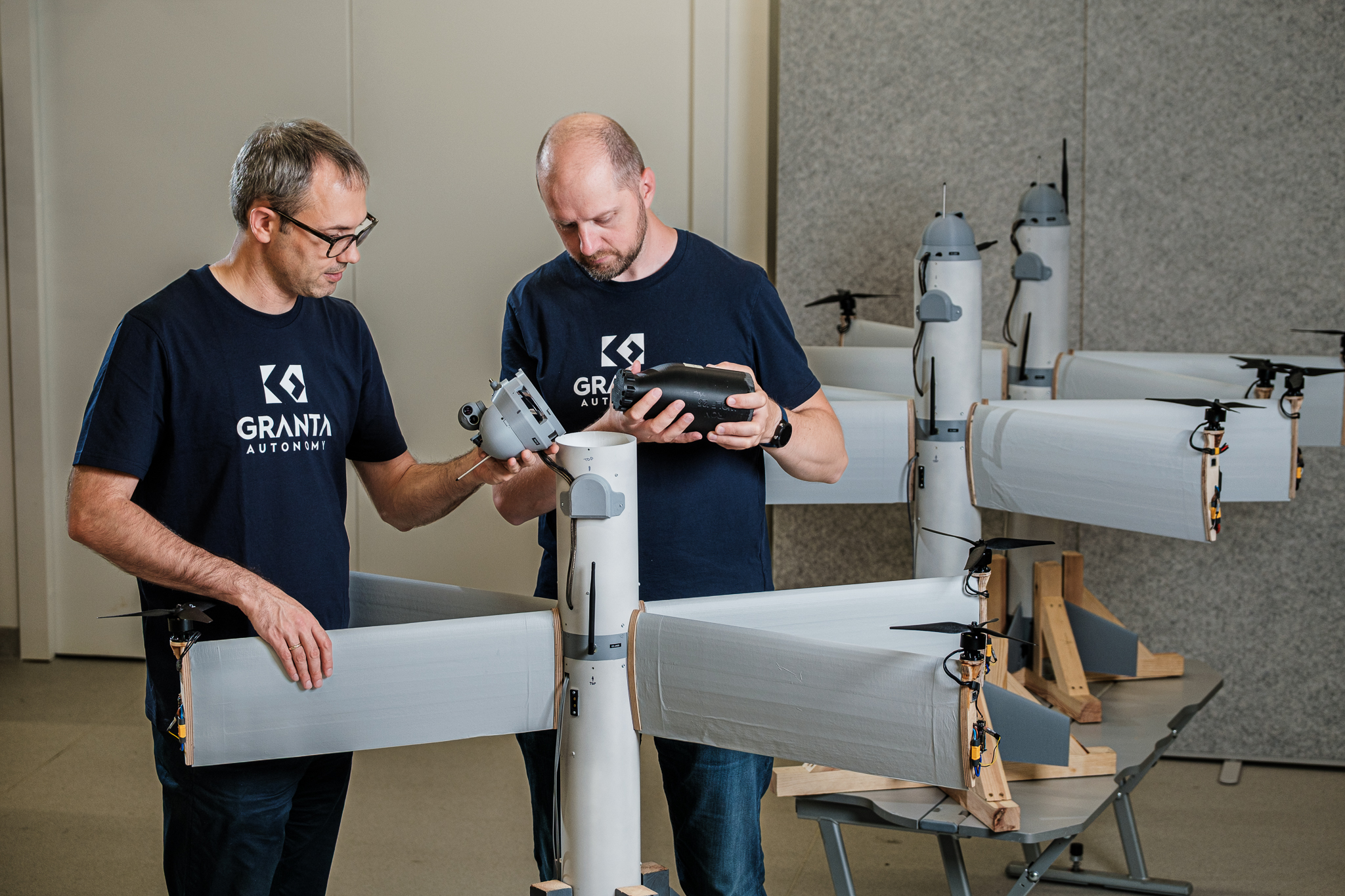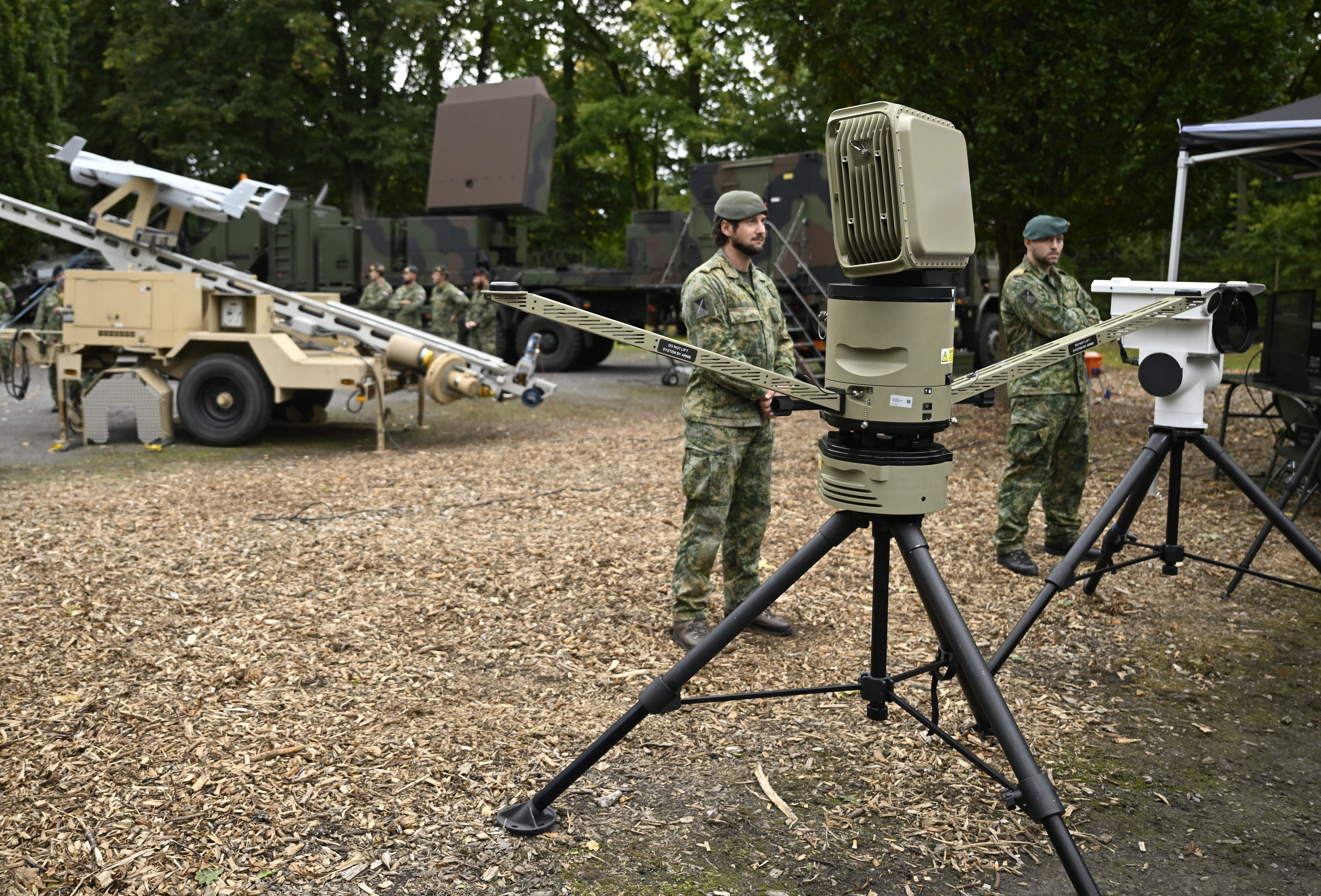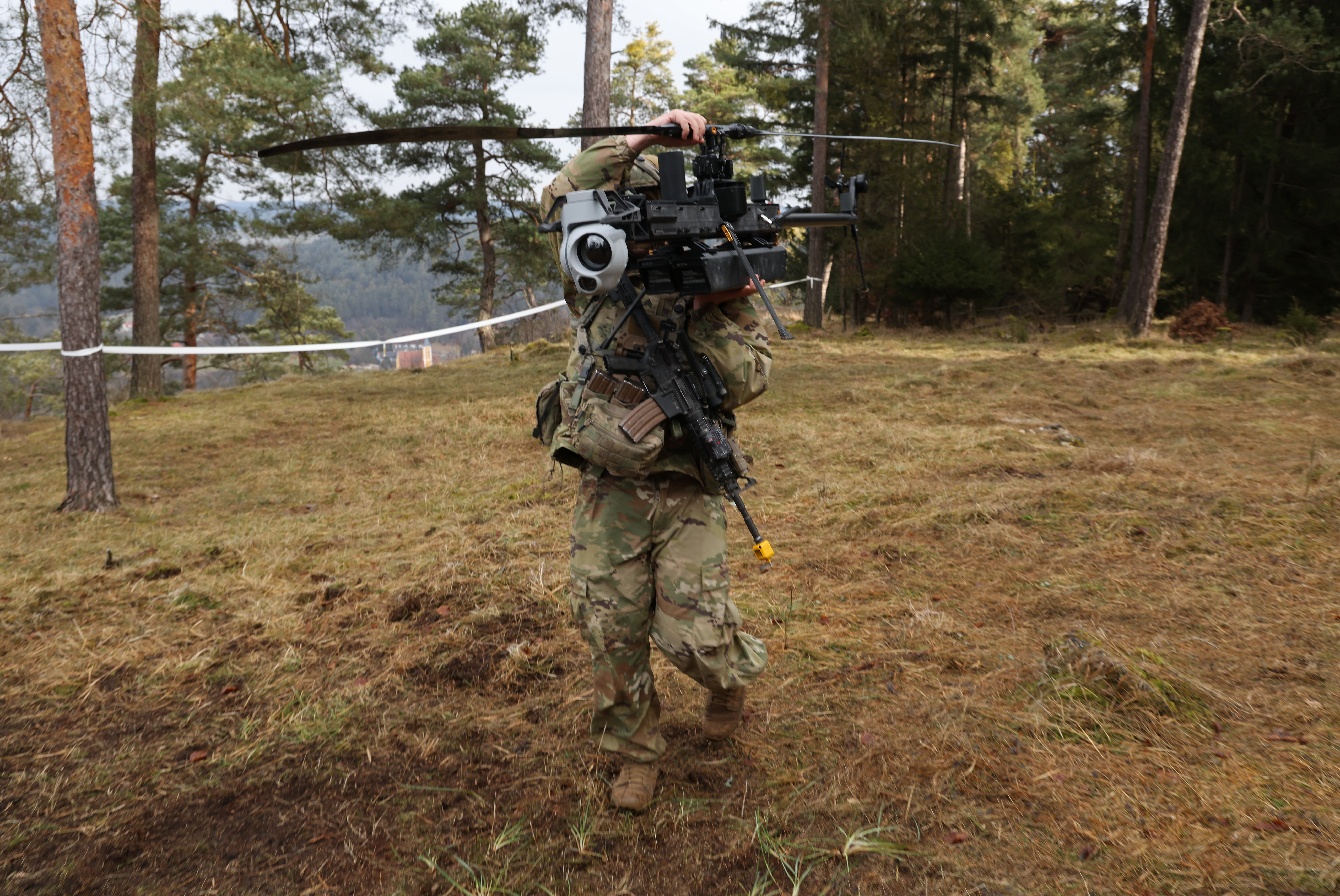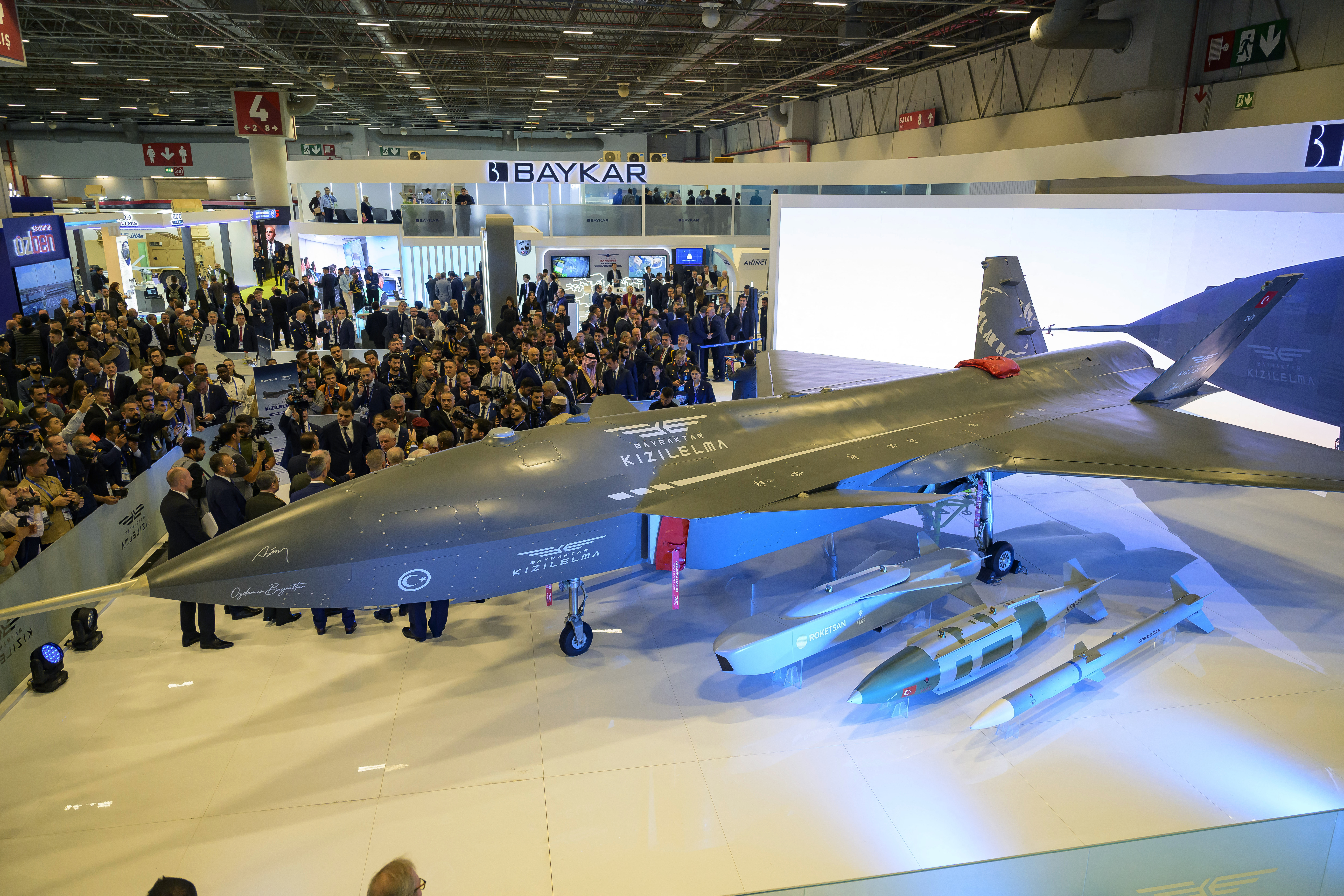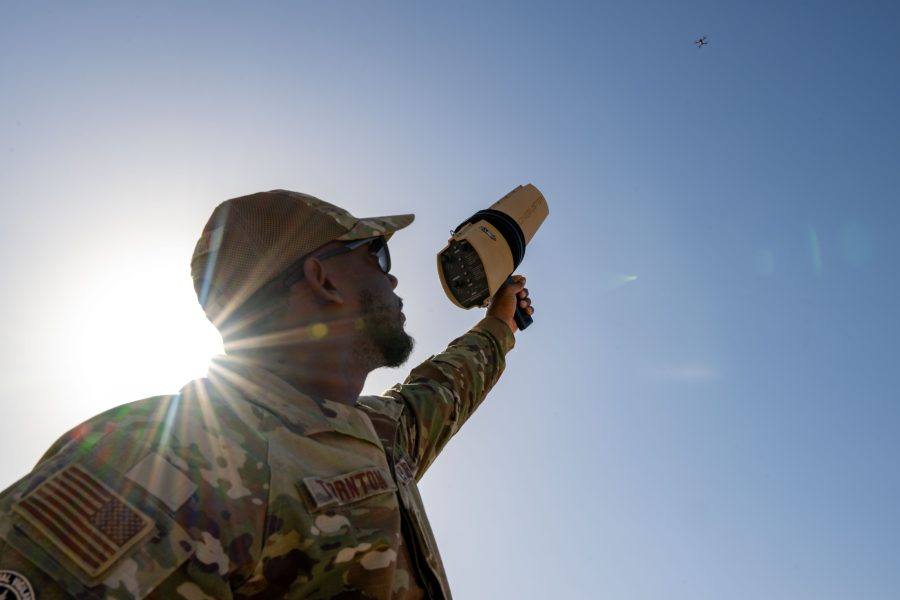
The Pentagon’s new counter-drone task force will play a direct role in arming Airmen with new weapons to defend remote air bases against enemy drone attacks, the director of Joint Interagency Task Force 401 said Oct. 14.
The recently established task force replaced the Joint Counter-small Unmanned Aircraft Systems Office to improve cooperation among DOD and federal agencies working together to counter the rapidly evolving drone threat. The Air Force’s agile combat employment, or ACE, concept will require compact defenses to help protect expeditionary airfields from drones.
“One of our goals is to change the way that the department thinks about counter small UAS,” said Army Brig. Gen. Matt Ross, director of JIATF 401 told an audience at the Association of the United States Army’s annual meeting. “That’s a big ask.”
The Task force will be “fully joint,” Ross said. “One of the things we are going to be charged with is ensuring interoperability and consistency with our counter small UAS approach across the department. So the JIAFT will have approval authority … for future programs of record in every service. That includes the Army, that includes the Navy, the Air Force, the Marines.”
The Pentagon has launched multiple programs to counter growing concerns about inexpensive, hard-to-detect drones. Options range in size and complexity, from hand-held Dronebusters to trailer-size high-power microwave systems like the Tactical High-power Operational Responder, or THOR.
The joint counter-drone task force will oversee all new programs and also take control over some existing efforts, such as the Defense Innovation Unit’s Replicator 2 initiative for counter-UAS systems.
“We want to make sure that we’re not working in stove pipes,” Ross said.
The Army is moving away from a fully-integrated counter-UAS vehicle and developing a modular “sled concept,” a pallet that can be loaded on the back of any tactical vehicle and offering a series of modular options, said Col. Marc Pelini, director of the Army Transformation and Training Command’s Air and Missile Defense Cross-Functional Team, speaking at the AUSA annual conference Oct. 13.
“When I talk about menu options, I’m talking about being able to pull off a radar, like an X-band radar and put a Ku-Band radar on,” Pelini said. “And the system itself, or the pallet itself, recognizes that and automatically changes the user interface for the operator to engage those threats.”
As the Army moves in that direction, the task force’s role will be to ensure it is “consistent with the direction that JIAFT 401 has put out for capabilities across all the services,” Ross said.
Drone concerns took on new urgency in the wake of Ukraine’s Operation Spiderweb in June, which unleashed small UASs on Russian air bases, destroying much of the Russian bomber fleet as the planes sat at rest on runway aprons. Defending against small UAS could be even more difficult at expeditionary air bases, where small groups of Airmen will be expected to rapidly deploy and operate under Air Force’s agile combat employment, or ACE, strategy.
To Ross, there is no “one size fits all” solution for dealing with the counter UAS threat. “Every situation will be a little bit different … especially for agile combat employment.” The task forcce’s job is to ensure the Air Force has the options available to make the right equipment selections.
“We will make sure that every decision that the Air Force makes, is well informed by the testing, development and evaluation that we do internal to the JIATF,” Ross said.
An Air Force spokesperson acknowledged that the service is working with the new task force, “but we don’t yet have anything to share.”
Counter-drone technology firms are producing low-cost rocket systems, interceptor drones, and directed energy weapons such as high-powered microwave weapons to defend against drones and swarms.
“If there was a silver bullet, we would already have it; our partners would already have it,” Ross said. “So, when I think about counter and small UAS capabilities, I think each has its own purpose under certain conditions.”
While a large, fixed base might need an exquisite radar, smaller remote bases can expect far less bespoke solutions.
“I want to give you that flexibility,” Ross said. It won’t be the Pentagon saying, “‘Hey, here’s what you get,’” he added. “We’ve got to do better than that.”
The post Pentagon’s New Counter-Drone Task Force to Arm Future ACE Airmen appeared first on Air & Space Forces Magazine.

Air, Russia-Ukraine, Technology, Air Force, counter drone systems, Pentagon, small-counter UAS
Air & Space Forces Magazine
[crypto-donation-box type=”tabular” show-coin=”all”]

